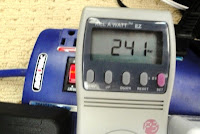When we moved to
Hawaii, we were faced with a lot of big decisions like what to bring, whether
to ship our cars or buy new ones on the island, and how to transport everything
over 2,000 miles across an ocean. We have come to realize how important the
moving choices we made five years ago have been to our cost of living and
quality of life in Hawaii.
We love getting
emails with questions and moving stories from people drawn to the island.
We are surprised that the frustrations people have about their move to
Hawaii are so similar. Unlike moves to other states in the US, most
newcomers are rarely able to find ways to change their circumstances once they
have settled on the island.
We wrote a new
book: Your Ideal Hawaii Move: A Guide for Moving to Hawaii Island,
to consolidate everything we learned about moving to Hawaii in one place. The
book describes how the decisions you will make during your move later affect
your living expenses and lifestyle in Hawaii. Some seemingly minor
choices can cost a lot in Hawaii.
For example, can
you imagine having to ship your car to the mainland for warranty service or
repairs? Some brands of cars have no dealers in the state of Hawaii.
We know people who routinely transport their vehicle to California, fly there,
and stay in a hotel to get warranty service on their car. Bringing the
wrong make and model of car can be a major hardship and cost in Hawaii.
Another choice a
lot of newcomers to Hawaii make is to retain their driver’s license from
another state on the mainland. Many people living on Hawaii Island have never
become legal residents of the state. Their choice prohibits them from
participating fully in state and county activities, voting, and potential financial
benefits of residency.
Living a few extra
miles out of town is no big deal on the mainland, however in Hawaii where gas
is $4 a gallon or more,
every mile costs a lot more. Utilities and services that are taken for granted
on the mainland may not
be available in some neighborhoods. Choices made about where to live make
a big difference in the cost and quality of life on the island.
The book is organized into sections
addressing the differences in location on the island; advanced planning for the move; setting up after
the move; ideas for managing the cost of living; getting a job; and the many fun activities there are on the
island. Though the book is focused on moving to Hawaii Island, most of
the content is applicable to moving to other islands in Hawaii.
The book is
available in Kindle ($4.99) and paperback ($9.99) versions. You can view the
table of contents and read the first chapter about our move from Northern California
to Hilo by selecting “Look Inside” on Amazon.







